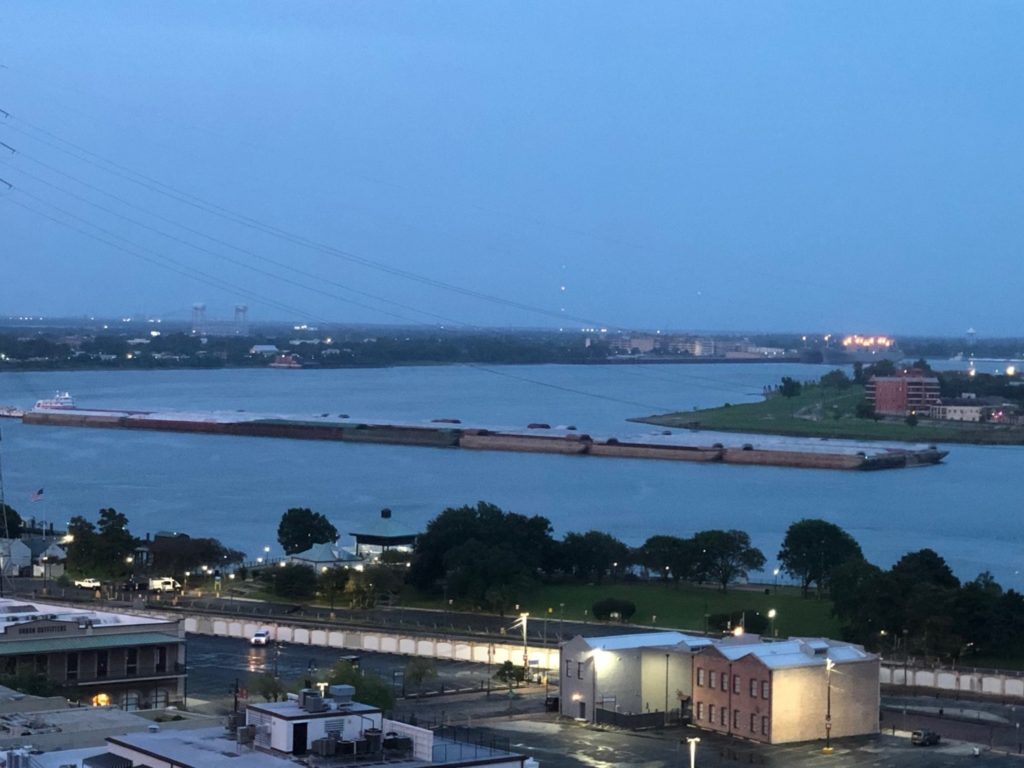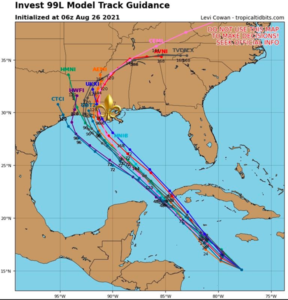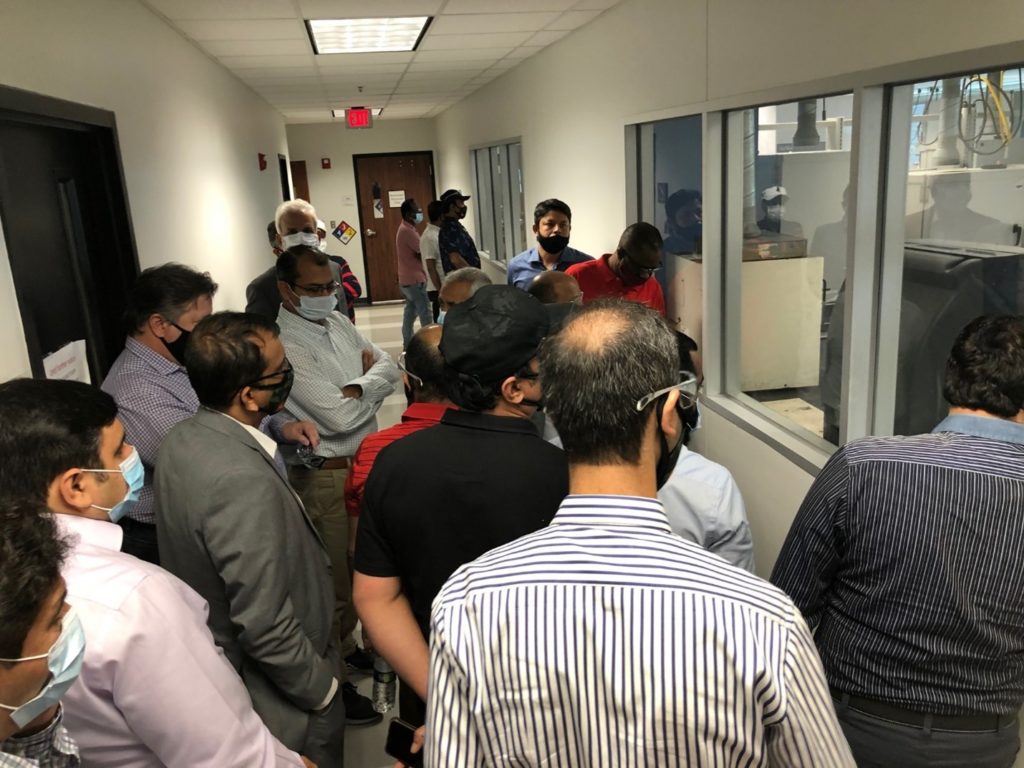South Asia Trade Team Sees Hurricane Prep Firsthand
- Category:
- General News


Following the wild success of USSEC’s first in-person global event since COVID-19 gripped the world, trade team members from the South Asia departed for an experience they won’t soon forget — Gulf hurricane preparedness protocols.
It was initially envisioned to be a simple tour of U.S. export elevators … the team wanted to view first-hand the elegant dance that takes place as soybeans hauled on barges from upriver are carefully loaded onto vessels, showcasing the procedures that ensure quality and volume. However, that all changed during a coffee break.

We started tracking Ida, which was not even named at the time and only referred to as “Invest 99L,” Thursday morning. At that point, nobody knew it would become a Category 4 hurricane and be so strong that it would temporarily cause the Mississippi River to reverse its flow. From that point onward, safety was our first priority, but we also wanted to spotlight strategic planning, a critical advantage of U.S. soy compared to other soy-exporting countries.
Shakil Ashfaq, Chief Executive for Shujabad Agro (one of the biggest oilseed crushers in Pakistan) reflects on his experience: “Unfortunately, the trip to New Orleans wasn’t exactly what we thought it was going to be, but getting to experience the complexities necessary to overcome an adverse event like Ida, shines light on how the U.S. soy supply chain can execute and adapt.”
Tom Russell, of Russell Marine Group, briefed the team noting that the key to the success of U.S. exports is dependent upon its ability to execute. To that end, one must be flexible and anticipate situations and problems. Hurricane Ida is a great example.
In life, experiential learning is unparalleled, and experiences are priceless. The team not only learned about normal vessel loading and fumigation practices, but they also learned how grain elevators, barge operators and ship owners carefully prepare for the worst and hope for the best.

In today’s environment, information is the world’s only global currency. It’s accepted everywhere and never commoditized. This entire trip, beginning with GTE in St. Louis and culminating with hurricane prep in New Orleans, certainly highlighted that fact. You can read about hurricane preparation in the Gulf on any newswire, but unless you’ve experienced it, it’s hard to truly understand the magnitude and scale of what is at stake.
Following an adapted and slightly abbreviated agenda full of team meetings, the team safely departed Saturday, Aug. 28. Making landfall Sunday morning, a Category 4 hurricane hit Grand Isle, La., and caused extensive damage to the region. At this time, there appears to be extensive damage to Cargill Reserve and CHS Myrtle Grove. As much of the city is still without power, it's unclear as to the extent of damage elsewhere.
On behalf of the USSEC team, our thoughts and prayers are with everyone impacted by Hurricane Ida and we wish safety upon everyone in the Gulf region.
This story was sponsored by the United Soybean Board.
Kevin Roepke serves as USSEC Regional Director for South Asia and Sub-Saharan Africa.